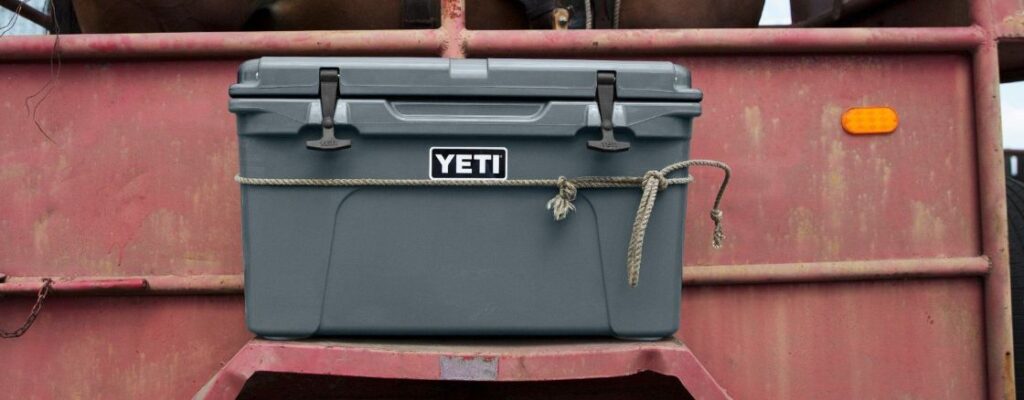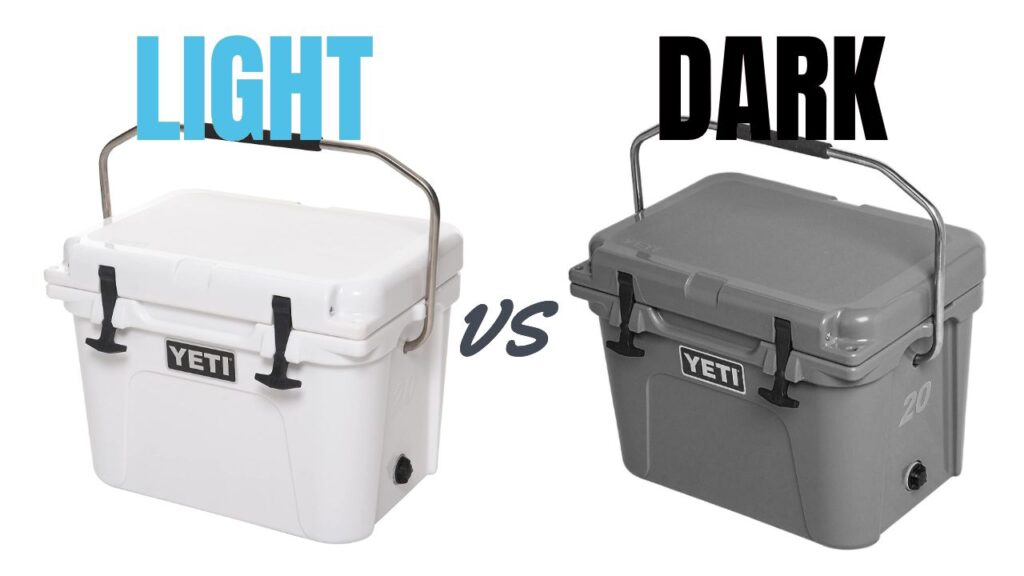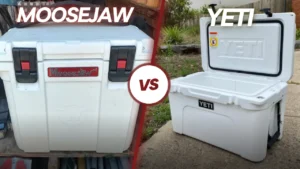Picking a Yeti Cooler can be more of a challenge than you’d think. With so many sizes and styles available, you want to make sure you’re making the right choice — especially when you’re dishing out that kind of cash.
White seems to be the most popular choice but it also tends to be the most boring. With darker options like tan and charcoal or even limited edition colors like yellow, orange and red there are lots of colors to choose from.
But color can actually have a pretty big impact on how well your cooler performs and dark color coolers do in fact get hotter than light colored coolers.
Dark colored Yeti Coolers will absorb more light energy than lighter colored coolers, meaning that a darker Yeti will get significantly hotter than a light one when left out in the sun.
On a hot sunny day the surface temperature difference between a white and dark cooler can be as much as 50-60ºF (37-33ºC).
The most noticeable difference will be on the cooler’s surface, making carrying or sitting on your Yeti less comfortable. And while it’s not as obvious, the color of your Yeti also affects how long your cooler stays cold. A black Yeti, for example, can lose as much as a half-day’s worth of ice retention versus a white Yeti in the exact same conditions.
While dark colored Yeti Coolers have their benefits (they don’t scratch and scuff as easily and are easier to keep looking new), having owned both, the cooler surface and longer ice retention of light Yeti Coolers are still firmly my preference.
Dark Yeti Coolers Absorb More Heat

If you’ve ever left your dark Yeti Cooler out in the sunlight for a few hours, you probably noticed that the exterior of the cooler was scorching hot when you came back.
What’s happening is that darker colors absorb more wavelengths of light from the environment, which in turn converts to heat. And the darker the color, the hotter it’ll get.
Light colors, on the other hand, reflect a majority of light energy rather than absorb it. Meaning a white Yeti Cooler will stay relatively cool, even in direct sunlight.
And it’s not a small difference either.
The surface temperature of a black cooler in the hot summer sun can be as much as 50-60ºF (27-33ºC) hotter than a white cooler left in the same conditions, which becomes very obvious when you go to pick up your cooler or use it as a seat.
The below video shows this in action during their ice test challenge:
The surface temperature on the coolers when in full sun was as follows:
| Cooler Color | Surface Temperature |
|---|---|
| White | 96ºF / 36ºC |
| Light Blue | 128ºF / 53ºC |
| Camo Tan | 149ºF / 65ºC |
| Dark Wood Camo (Dark Brown/Green) | 150ºF / 66ºC |
As you can see just by changing from a white cooler to a light blue cooler saw a jump in temperature of around 30ºF / 17ºC and then a jump of 54ºF / 30ºC when you moved to the dark wood colored camo cooler.
If a cooler was charcoal or black then it would likely be hotter again.
It's a pretty significant difference. Sitting on a white cooler at 96ºF/36ºC would be fine and wouldn't burn your bottom at all.
But sitting on a 150ºF/66ºC black cooler would be very hot indeed.
This is also going to translate into how long each color cooler holds ice for.
Do Dark Yeti Coolers Keep Ice As Long As Lighter Coolers?

So now we know that the surface of a dark Yeti Cooler left out in the sun will get a lot hotter than a light cooler, but what effect does it have on ice retention?
If you compare two coolers that are the exact same size and model, with the only difference being color, you’ll typically find that white coolers outperform black coolers by about half a day.
That sounds like a pretty big deal and, if Yetis only kept cold for one day, it would be.
But keep in mind, Yetis typically keep ice cold for three to five days (or more) — meaning you’re only losing a half day from the end of a relatively long period of time.
For most people, in most cases, a dark Yeti will still keep ice cold for more than long enough.
If you already have a dark Yeti or just love one of the darker colors, you can always drape a light towel over it or make an effort to keep it out of direct sunlight — which will make it about as efficient as a lighter colored Yeti anyway.



